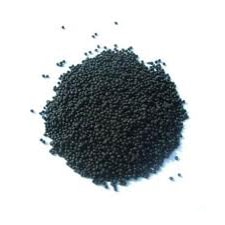Humic acid is an organic substance in the soil that is important for soil fertility, as well as for flora. Strong organic compounds are broken down by micro-organisms and converted into humus; this is what we call humification. Because humus is a collection of different organic substances, the term humic substances is also used.
Humification is a very slow process, much slower than the production of compost, for example. It takes at least 6-12 months to make a humic acid-like substance such as compost, but in nature the formation of a humus acid layer takes much longer. Some humic layers were created 40 million years ago; these can be 2 to 3 meters thick and are 2 to 3 meters deep in the soil.
Humic acid occurs in nature both in the soil (mud/peat, lignite and sediments), as well as in water (in former times even in our drinking water). The formation of humic substances occurs through the biodegradation of dead organic material (digested plant remains). This process is called humification. The humic acid that we use in Oregon comes from a humic layer of 40 million years old, which originated in the Cretaceous period.
A rule of thumb about the quality of humic acid is: the older, the better.









